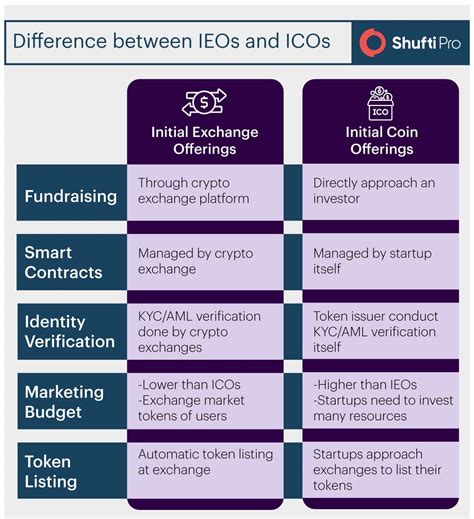Cryptocurrency: Ido vs. Ie: which is better for investors?

The World of Cryptocurrencies has seen a surge in popularity and adoption over the past has become years, with new tokens being launched every month. One of the key factors that investors consider when choosing which cryptocurrency to invest in is the type of listing process – initial distribution (IDO) vs. Initial Exchange Offering (IEO). While both processes have their pros and cons, Ido has been gaining popularity among investors, while ie remains a more traditional approach.
What is an ido?
Initial Distribution (IDO) Refers to the process by which a new cryptocurrency is distributed to its Initial Investors or Backers. During this process, the token is given away for free in exchange for money raised from these early adopters. The ido process allows for instant access to the new coin and provides early investors with a chance to benefit from the project’s success before it reaches the public market.
What is ano?
Initial Exchange Offering (IEO) Refers to the process by which a cryptocurrency exchanges its existing shares or tokens on a public exchange. In other words, an ie allows investors to buy and sell the token through an existing platform, Rather than giving it away for free like in an ido.
which is better for investors?
So, which one is better for investors – ido or ie? Here are some key differences:
* speed : idos typically have a faster process than ieos. The token is distributed instantly to the early investors, whereas ieos often require waiting days or even weeks for the token to be listed.
* Control : Idos give investors more control over their tokens and can lead to greater financial returns, as they receive a larger stake in the project’s success. Ieos, on the other hand, often result in investors receiving a few shares of the token and may have less control over its distribution.
* Marketability : Idos tend to be more marketable than ieos because early investors are often highly motivated to promote their new coin to their networks. This can lead to increased awareness and adoption among potential users.
But, what about Security?
One of the most common concerns about idos is that they may pose a higher risk due to the lock of regulation and oversight. However, some ido projects have implemented robust security measures to mitigate this risk, such as implementing anti-money laundering (AML) and know-your-customer (KYC) policies.
Examples of successful idos
Some Notable Examples of Successful Idos Include:
* Chainlink : A decentralized oracle service that enables smart contracts to interact with external data sources.
* DecentRaland : A blockchain-based virtual reality platform.
* Gemini
: A decentralized exchange (DEX) for trading cryptocurrencies.
Examples of Successful IEOS
Some Notable Examples of Successful IEOS INCLUDE:
* Near Protocol : An ethereum 2.0-based scaling solution that aIMS to reduce transaction costs and increased scalability.
* SingularityNet : A decentralized network for creating, discovering, and deploying ai-powered applications.
* Revolut : A Digital Bank that offers a range of financial services, including Debit Cards, Credit Cards, and Currency Exchange.
Conclusion
In conclusion, while both idos and ieos have their advantages and disadvantages, idos may be better suited for investors who prioritize speed, control, and marketability. However, it’s essential to do thorough research on any project before investing in its token. With the rise of decentralized exchanges (DEXS) and initial coin offerings (ICOs), the landscape is becoming increased crowded, making it crucial for investors to stay informed and adapted their strategies accordingly.
Disclaimer
This article is for informational purposes only and should not be considered as investment advice.
